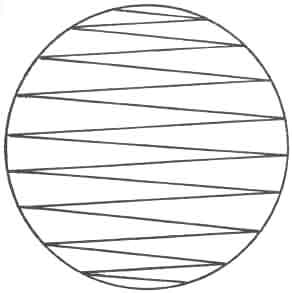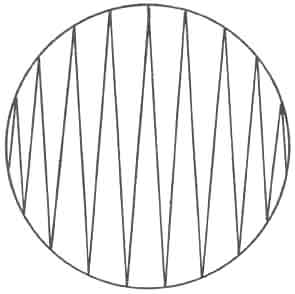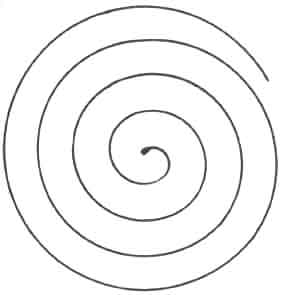How to Improve Your Eyesight. Eye exercises.
Sections for How to Improve Your Eyesight
- How to Improve Your Eyesight. Eye exercises.
- How to Improve Your Eyesight. Eye-Focusing Exercises
- How to Improve Your Eyesight. The Bates Method.
- How to Improve Your Eyesight. Computers and Eyesight.
 It is common logic that exercise of the eyes will strengthen these organs just as exercise of any other part of the body will strengthen that part.
It is common logic that exercise of the eyes will strengthen these organs just as exercise of any other part of the body will strengthen that part.
Improving your eyesight through eye exercises and massages is not only beneficial, it will also act as prevention toward any eye conditions that you might develop.
Most people will be surprised, even amazed, at the improvement in the condition of the eyes, resulting from two or three weeks of proper exercise of the eye muscles. This does not mean that you should keep up this work for only two or three weeks. If you make it a daily routine you can expect to enjoy strong eyes and good vision to perhaps the end of life.
Try to perform all eye exercises without turning your head.
Eye exercise 1. — Turn and stretch the eyes far to the left. Then turn and stretch them far to the right, continuing the movement back and forth from left to right ten times or more.
Eye exercise 2. — Turn your eyes upward, that is to say, look as far upward as possible without raising the head. Then, without moving your head, lower your eyes, looking as far down as possible. Continue raising and lowering your eyes ten times or more.
Eye exercise 3. — Raising your eyes, look upward diagonally to the left. Then lower them diagonally to the other side, looking downward toward the right. Repeat ten times or more.
Eye exercise 4. — Raise your eyes upward diagonally to the right. Then stretch them diagonally downward to the left. Continue back and forth ten times or more.
Eye exercise 5. — Roll your eyes around in a circle, to the left upward, to the right downward, so on around. Then reverse, rolling them the other way around. Continue until slightly tired.
Eye exercise 6. — Shut your eyes tightly and vigorously, squeezing your eyelids together as firmly as possible. Open and repeat ten times or more.
Eye exercise 7. — This is an exercise that should be performed without strain, and at first with only two to four repetitions at a time. Simply look cross-eyed as though trying to see the bridge of the nose with both eyes at once.
Eye exercise 8. – Starting from the left corner of your eye, moving down, trace an imaginary number 8 with your eyes. Reverse and repeat. Repeat ten times or more.
You will find that these exercises are very simple, yet very effective. You should practice them not once a day, but a number of times each day. You can practice them while dressing in the morning, while undressing in the evening, while out on your walks, while sitting in the car, or even while taking your meals. But you should set aside some particular time for this special purpose, whether it be morning or evening, else they are more than likely to be crowded out.
One of the most vigorous of eye exercises, and one extremely effective for gaining voluntary control of the muscles of the eyes, is the practice of looking cross-eyed.
The fact is that the ability to look cross-eyed voluntarily indicates a good muscular condition and good control of the muscles concerned, and a person with a tendency to involuntary squint will find the practice one of the best ways in the world to correct that condition.

Eye Exercise Diagram No. 1

Eye Exercise Diagram No. 2
Another very simple method of exercising the eyes will be found in a system of following lines drawn within a large circle, or an imaginary system of lines based upon any diagram, such as those illustrated here.
Suppose that the circle represents the completerange of vision attained by rolling the eyes around. Imagine, then, that this circle occupies the space on the wall of the room, in front of you, that you can see by rolling your eyes around.
Then imagine a series of lines or a continuous line running from side to side, as in Eye Exercise Diagram No. 1, from the top of the circle to the bottom. Now, starting at the top, follow on the wall with your eyes just such an imaginary scheme of lines as that in the diagram.
Practice this a few moments with one eye first, then with the other, finally with both eyes together, and then go on to the exercise suggested in Diagram No. 2.

Eye Exercise Diagram No. 3
In Diagram No. 3 the eye starts in the center, then traces out a circular, or to be more exact, an imaginary spiral line, until the circling of the entire range of vision is attained. The head must not be moved.
If you follow the eye exercises offered in the photographic illustrations there will be no need of adding these imaginary line-tracing exercises. But you may find them interesting as a change.



















